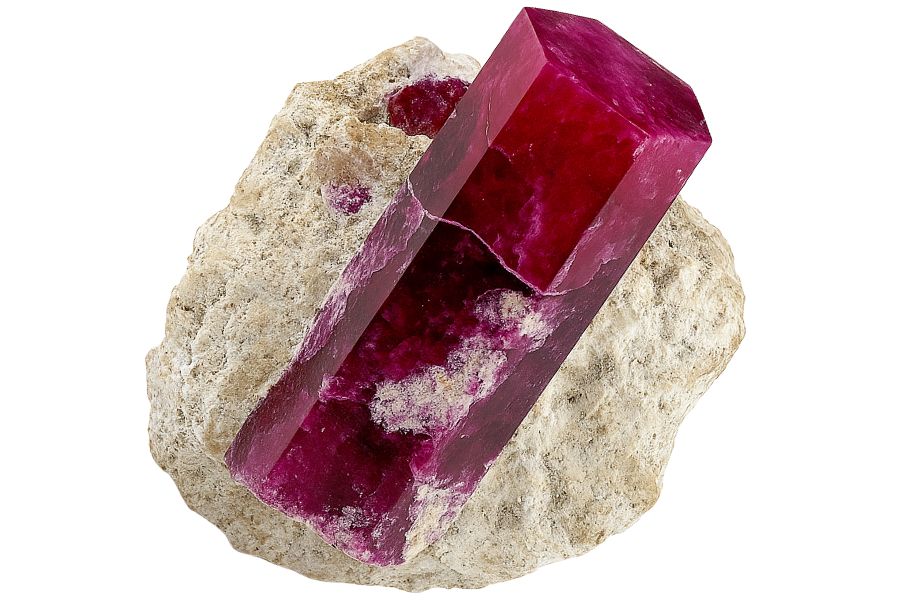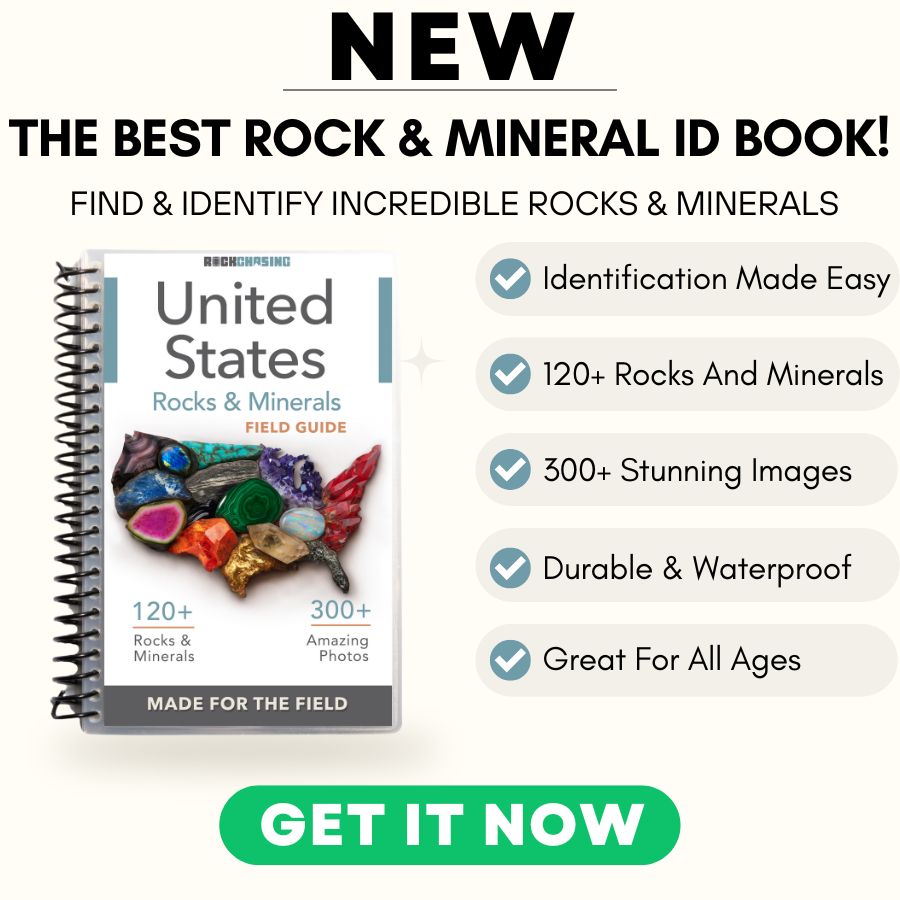Whether you’re building your collection or just chasing the fun of discovery, finding crystals in Utah starts with knowing where to look. The state’s mix of mountains, desert flats, and canyons hides plenty of beautiful pieces waiting to be uncovered.
Pulling a clean, glittering crystal from the rock it’s been stuck in for millions of years never stops being satisfying. Once you understand what kinds of places tend to hold them, your chances of going home with something great go way up.
Luck helps, but good collecting depends on knowing the land. The best finds often come from spots that take some effort to reach, but that extra work usually pays off.
Planning your search around the right types of terrain makes every trip more productive. When you head out with a clear idea of where Utah’s crystals are most likely to appear, you’re a lot more likely to end the day with a collection worth showing off.
- The extensive local experience and understanding of our team
- Input from multiple local crystal hunters and crystal collecting groups
- The accessibility of the crystal mining locations
- Safety and potential hazards when collecting
- Private and public locations
- A desire to include locations for both experienced crystal hunters and those who are just starting out
Using these weights we think we’ve put together the best list out there for those who love finding new crystals for our collections!
The Types of Crystals We Found
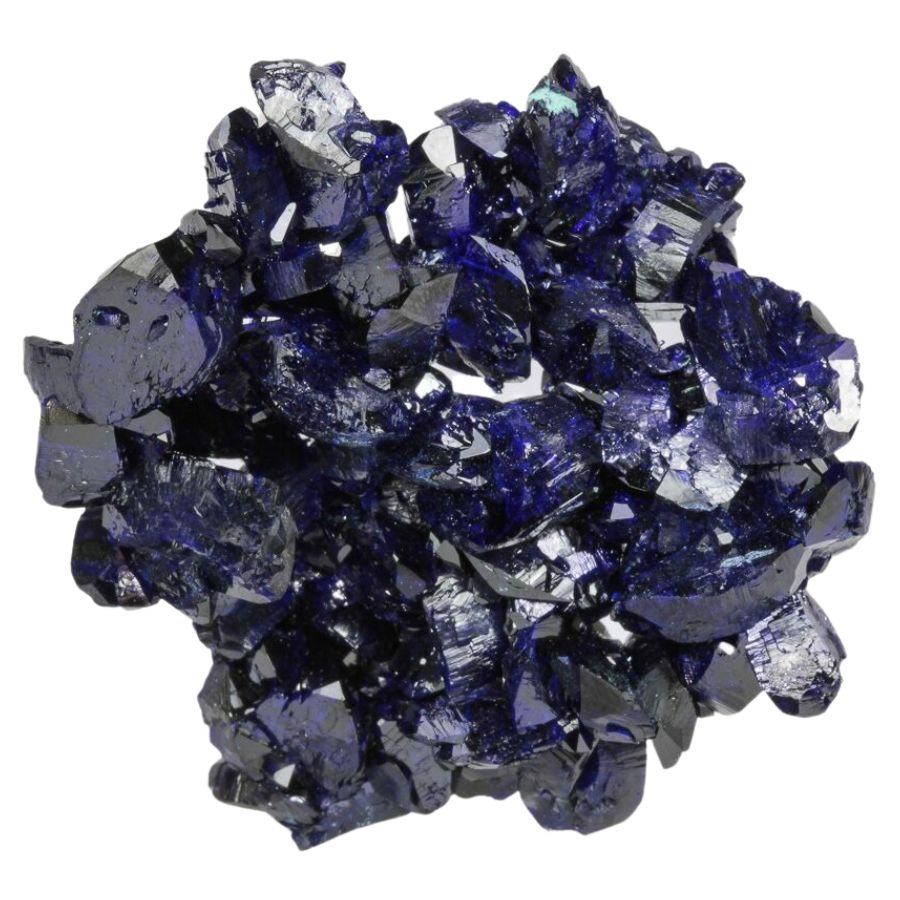
Here are the different kinds of crystals you can find in Utah:
Amethyst
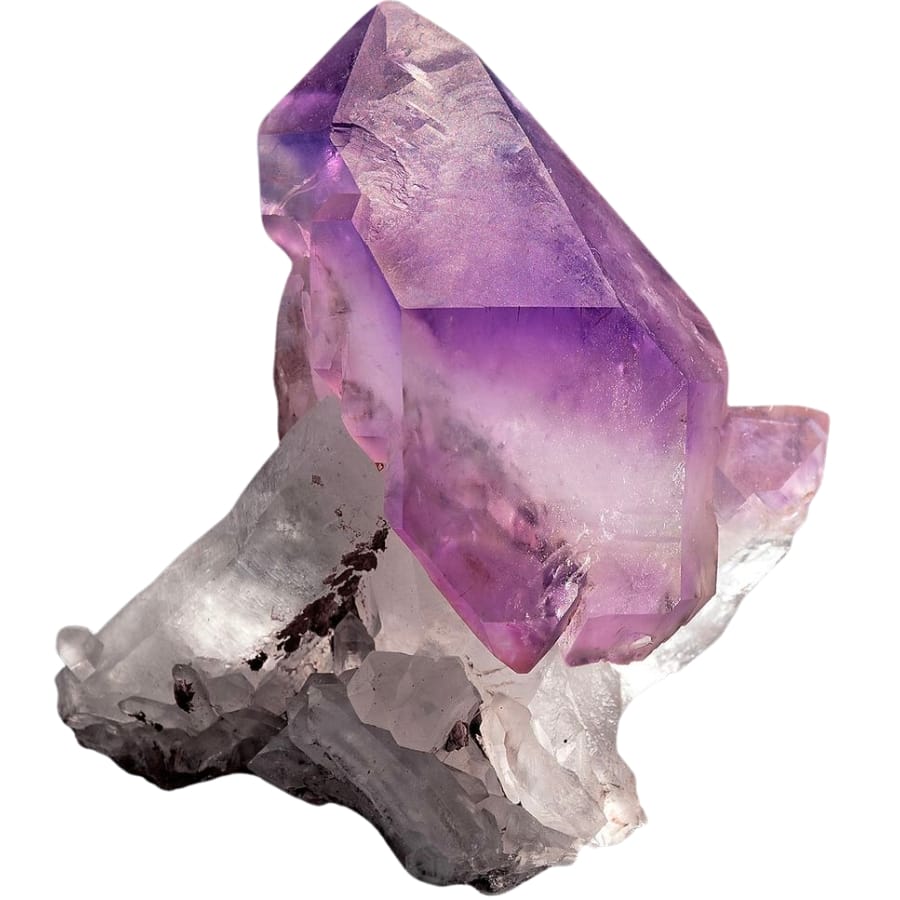
Amethyst is a beautiful purple crystal and a type of quartz. The purple color, ranging from a light lavender to a deep purple, is what makes it really special.
The reason amethyst is purple is because of tiny amounts of iron inside the quartz. When the it’s heated up deep in the Earth, this iron gives the amethyst its lovely purple color.
Amethyst usually grows in hollow rocks called geodes that form when lava cools and hardens. Inside it are little pockets where water with minerals can get in. Over a long time, this mineral-rich water deposits quartz inside the geode, and some of this quartz turns into amethyst.
The worth of amethyst has been appreciated for thousands of years. In the past, it was considered a precious stone, just like diamonds or rubies.
Today, it’s loved for its beauty and the way it sparkles in the light. Amethyst is often used in jewelry, like necklaces and rings. It’s also the birthstone for February, which means its special for those born in that month.
Where you can find amethyst in Utah
Amethyst deposits are widespread in our state, and some of the places where you can search for them are:
- La Sal Mountains
- Dugway mining district
- San Rafael Swell
Fluorite

Fluorite is a crystal that’s known for its amazing range of colors. It can be purple, blue, green, yellow, or even clear. Sometimes, one piece of fluorite can have several colors in it, which looks super pretty.
This crystal is made up of calcium and fluorine. It usually grows in veins in rocks, which are like tiny highways for hot water deep underground. This hot water has lots of minerals dissolved in it.
When the water cools down, the minerals start to come out of the water and form crystals. That’s how fluorite is made. The different colors happen because of tiny amounts of other minerals in the crystal.
How much fluorite is worth is rooted not only in its beauty but also its uses. It’s used in making things like steel and aluminum. It’s also used in making lenses for telescopes and cameras because it lets light pass through it very clearly.
Fluorite is popular with collectors because of its colors and because it often forms in cool shapes like cubes or octahedrons (eight-sided shapes). Plus, under ultraviolet light, some fluorite even glows!
Where you can find fluorite in Utah
Here are some of the many places where you can find fluorite in our state:
- Deep Creek Mountains mine
- Desert Mountain mines
- Fish Springs mines
Pyrite
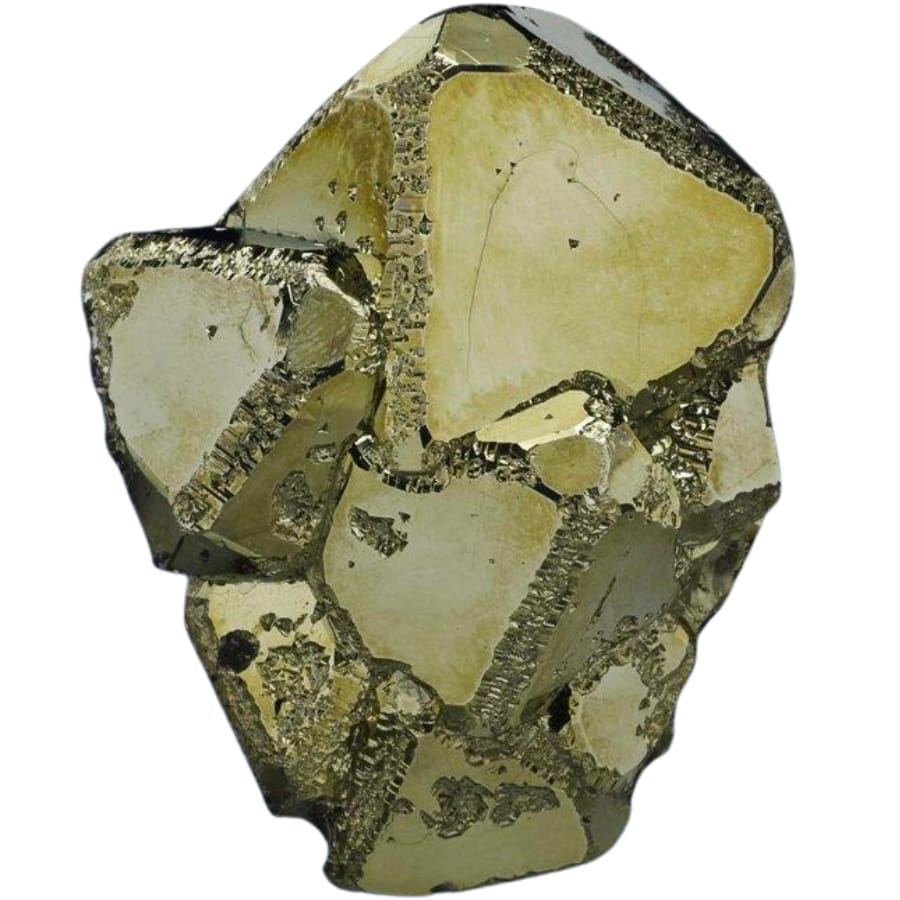
Often called “fool’s gold,” pyrite is a shiny, metallic-looking crystal that gets people excited because it looks like real gold. But it’s actually not gold at all!
It’s made from iron and sulfur and usually forms in squares or cubes, which is pretty neat because most crystals don’t have that shape.
Pyrite forms in different ways. One common way is when tiny particles of iron and sulfur mix together in water. This mixture sinks to the bottom and starts to form crystals.
Pyrite can also form in rocks that are heated up by magma from volcanoes. The heat makes the iron and sulfur come together and grow into its crystals.
Though it looks like gold, the price of pyrite is far from it. And although it has gained interest because of its resemblance to gold, it’s not just its looks that make pyrite valuable. It’s used in making sulfuric acid, which is an important chemical in lots of industries. It’s also used to make iron.
Where you can find pyrite in Utah
To locate pyrites, below are some of the spots you can explore:
- Tintic Prince Mine
- Spor Mountain
- Little Drum Mountains
Azurite
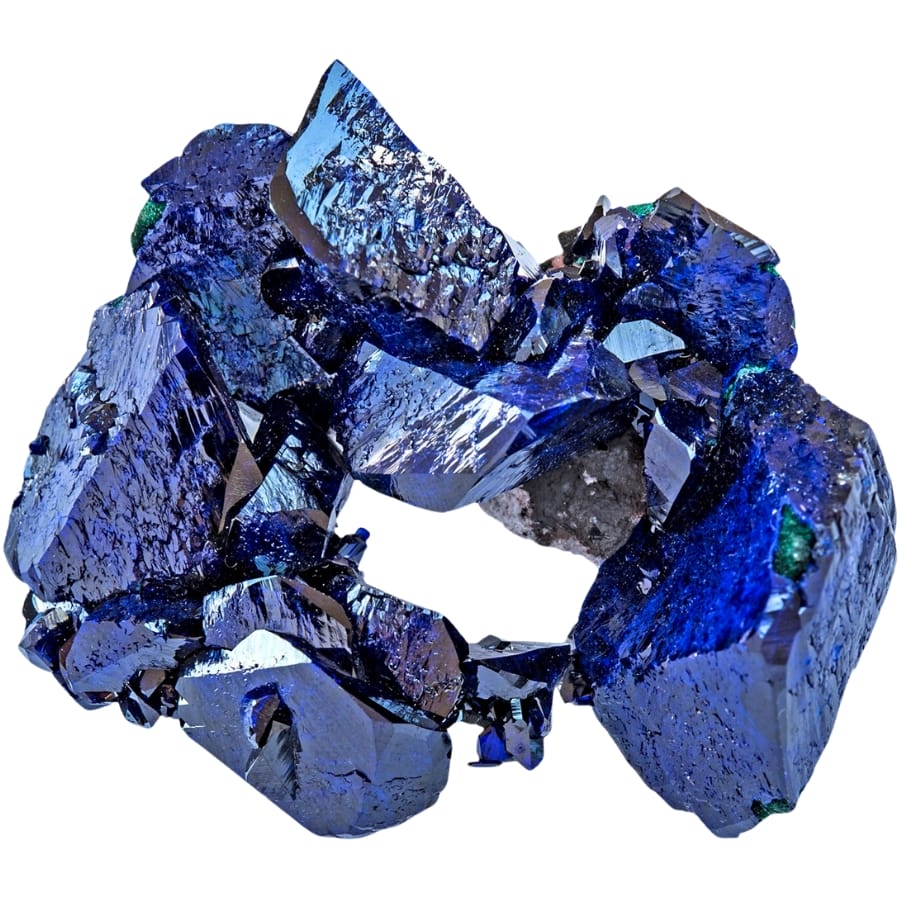
Azurite is a stunning crystal that’s famous for its deep, vibrant blue color. It’s actually a copper mineral, which means it’s made from the same stuff as pennies and pipes, but in a different form.
It usually forms in places where copper-rich rocks are exposed to air and water. This happens a lot in desert regions where copper mines are.
When water seeps into copper-rich rocks, it starts a chemical reaction. This reaction changes the copper and other minerals in the rocks into azurite. Over time, as more and more of these reactions happen, the azurite crystals start to grow.
Sometimes, this crystal is found with another blue-green mineral called malachite, which we’ll talk about more below.
The deep blue color of azurite has made it popular for jewelry and decoration for thousands of years. Artists used to grind it up to make a blue pigment for paint. This paint was used in some of the most famous artworks in history.
Where you can find azurite in Utah
We highly recommend exploring the following places if you want to find azurite:
- Willard area mines
- Little Bear River
- Swan Creek
Malachite
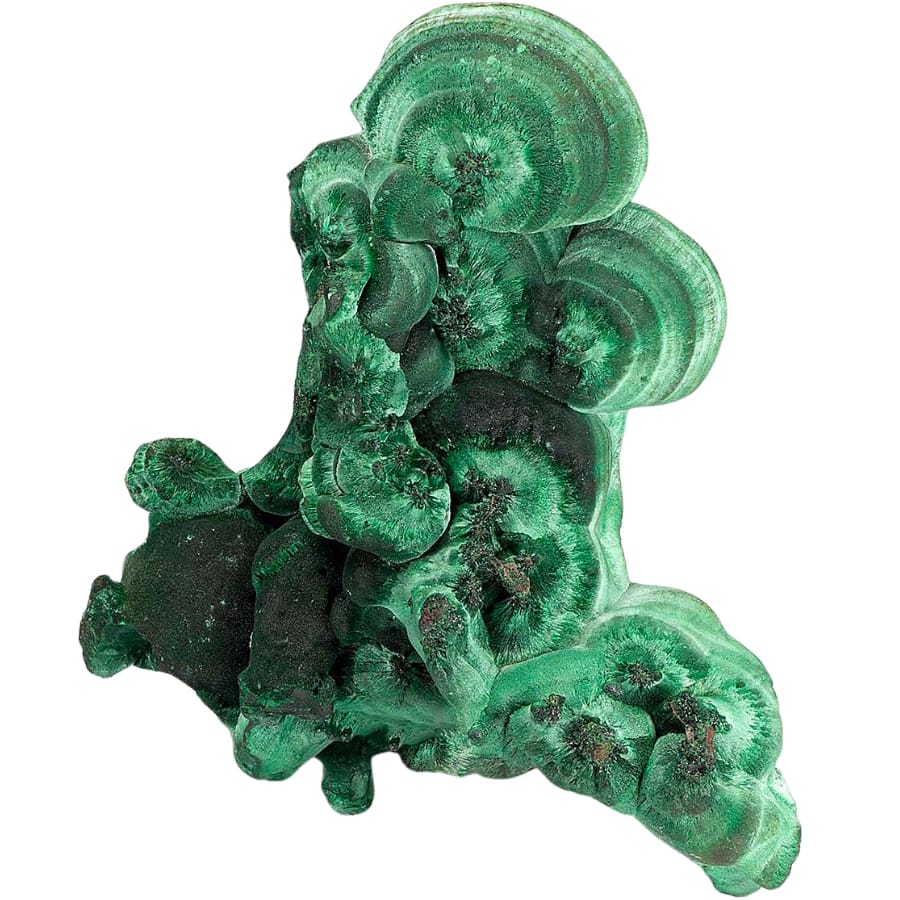
Malachite stands out because of its bright green color. It’s made from copper but it looks totally different.
When water with copper in it moves through rocks, it reacts with other minerals and oxygen in the air. This reaction changes the copper and minerals into malachite.
One of the most amazing things about this crystal is its patterns. It often has stripes or bands of different shades of green, which can look like waves or swirls. And as we said, you can often find malachite mixed with azurite.
Malachite’s value is tied to its beauty and uses. In ancient times, people used it to make jewelry and decorations because it’s pretty and easy to carve.
It has also been ground up to make green paint. Even today, it’s popular in jewelry and for decorative objects like bowls or sculptures.
Where you can find malachite in Utah
You can find beautiful specimens of malachite if you search through the following:
- Promontory Mountains
- La Plata area
- Farmington mining district
Quartz
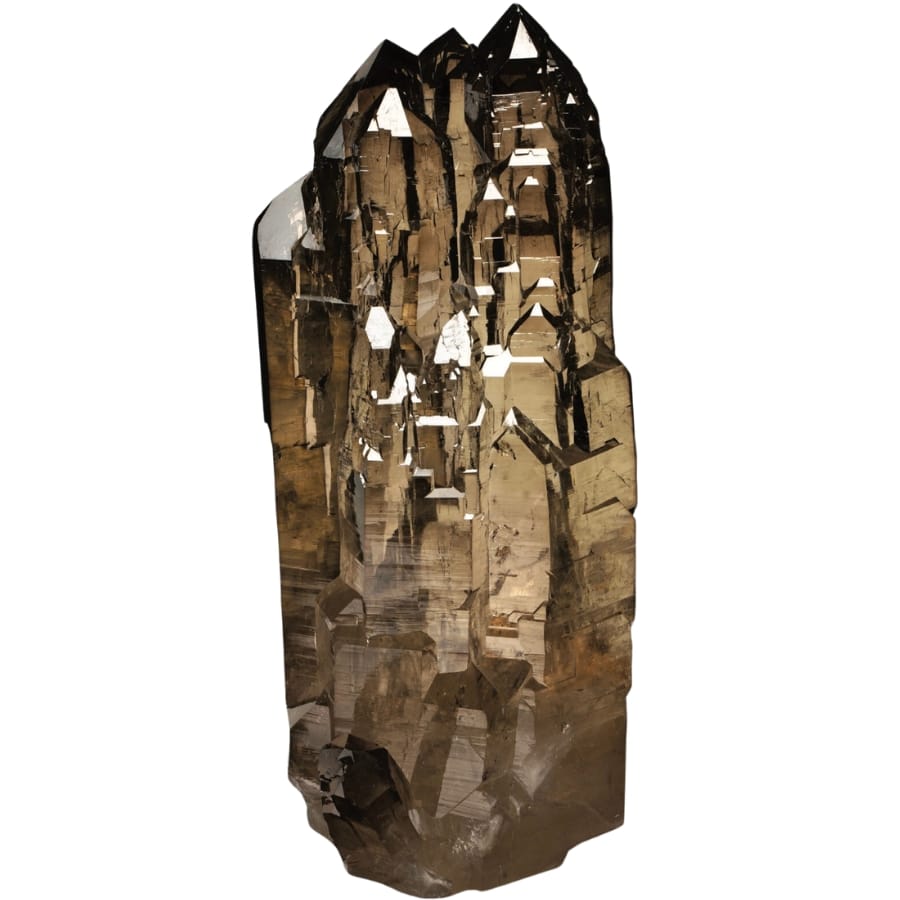
Quartz is a super common but really amazing crystal that you can find all over the world. It’s known for being clear and shiny, but it can also come in different colors like pink (rose quartz).
It’s made of silicon and oxygen, two of the most common elements in the Earth’s crust. It usually starts forming deep underground, where it’s really hot. When minerals in the rocks mix with water, they dissolve.
As this mineral-rich water moves through cracks in the rocks and cools down, quartz starts to form. Sometimes, the water evaporates and leaves this crystal behind.
The value of quartz depends on many factors, including its appearance and usefulness. In ancient times, people made tools and even crystal balls out of quartz.
Today, we use this crystal in watches and clocks because it helps keep time accurately. Quartz is also used in electronics and for making glass.
Where you can find quartz in Utah
Quartz is abundant and widespread in Utah, and some of the speficic areas where you can find them are:
- Little Cottonwood
- Wells Canyon
- Bullion Canyon
Topaz
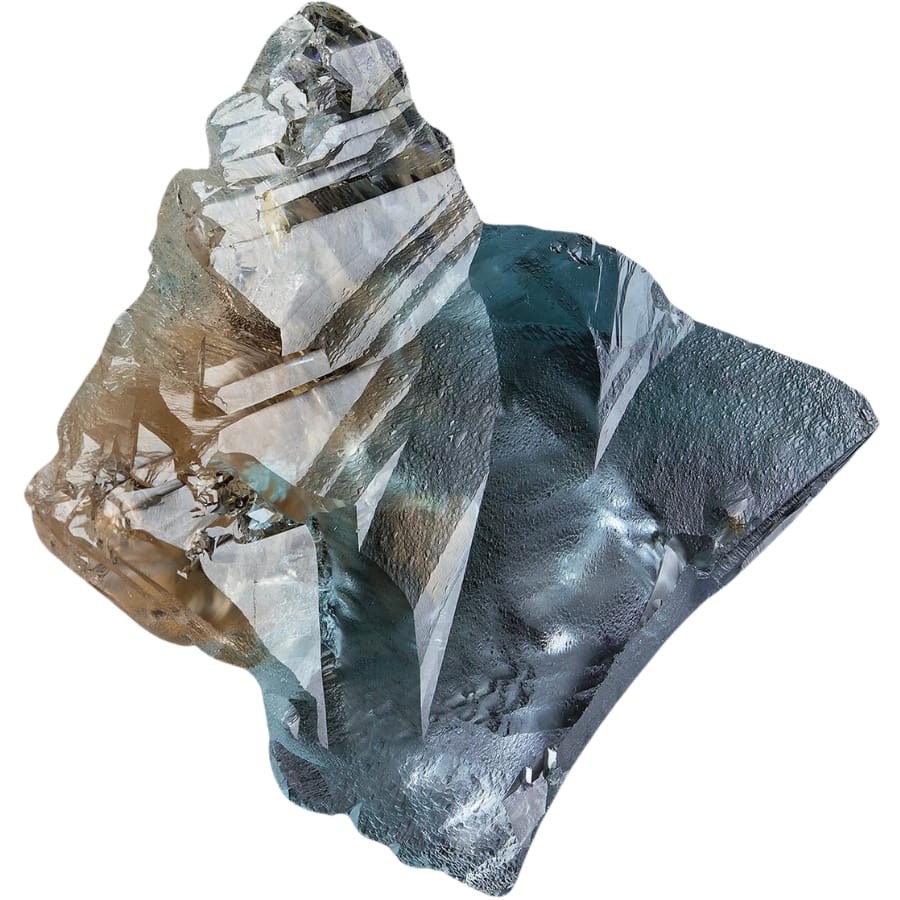
Topaz can be found in lots of different colors, from clear and colorless to blue, pink, and even golden yellow. Its most common color, though, is a beautiful sky blue.
This gem is made of a mineral that forms deep under high pressure. It forms in cracks or cavities in rocks where the right mix of minerals and fluids come together.
The Utah topaz is famous for being really clear and sometimes a shimmery, golden color. Over time, it can even change color. When it’s first dug up, it might be clear or have a light color, but if you leave it in the sun, it can turn pink!
The value of topaz is influenced by it being just plain beautiful. The way it sparkles and comes in so many colors makes it a favorite for jewelry.
Also, it’s pretty hard, which means it doesn’t scratch easily. That’s great for rings or necklaces that you might wear every day.
Where you can find topaz in Utah
Lucky for you, topaz is abundant in Utah. Below are some only of the many places that you can explore for this beautiful gem:
- Dugway Range
- Thomas Range
- Topaz Dome Quarry
Garnet
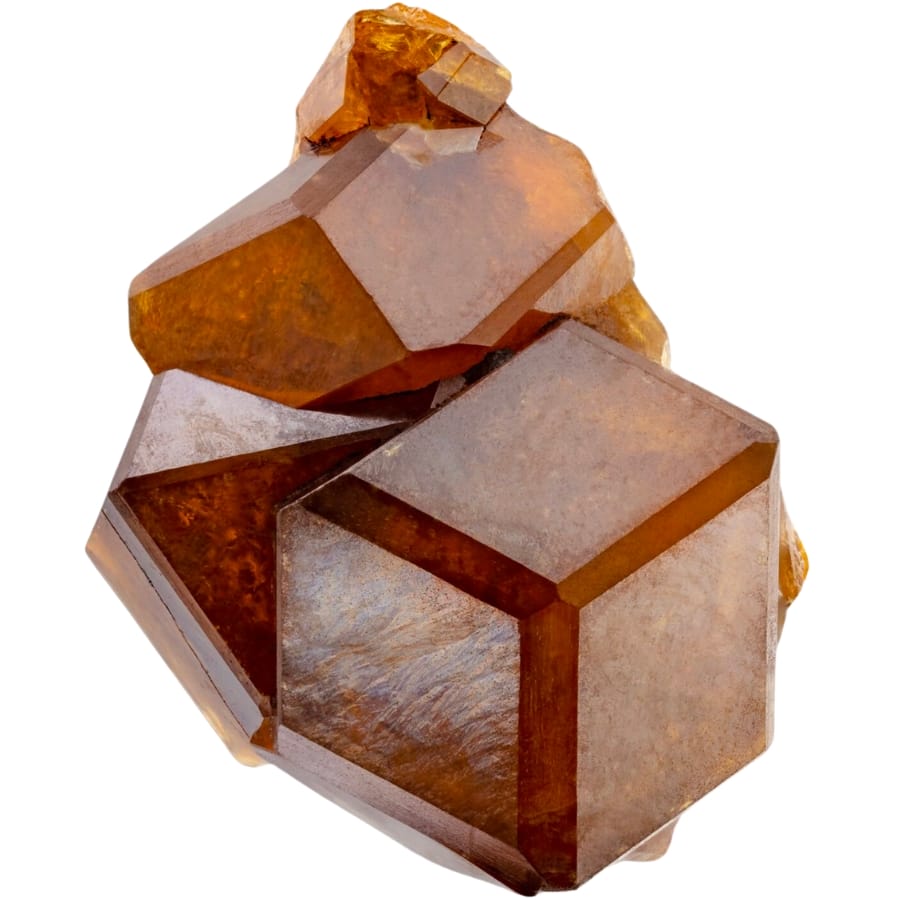
Garnet is known for its deep red color, although it can come in other colors too, like green, orange, or even purple. It’s actually a group of minerals that form under a variety of conditions.
Most garnets form when rocks deep underground are heated and squished under a lot of pressure. This can happen during processes like mountain building or when two of Earth’s tectonic plates smash together.
It can also form from rocks that are heated up by magma underground. Sometimes, this gem is found in rocks that have been altered by hot fluids from deep.
Garnet’s value has been evident for a long time because of its beautiful colors and how it sparkles in the light. It’s quite hard and durable, too, making it great for jewelry that you can wear every day.
Also, because garnet can handle high temperatures and isn’t easily scratched, it’s useful in industrial settings, like for cutting materials.
Where you can find garnet in Utah
If you want to uncover garnet here, you can visit and search through the following sites:
- Amasa Valley
- Painter Spring
- House Range
Cerussite
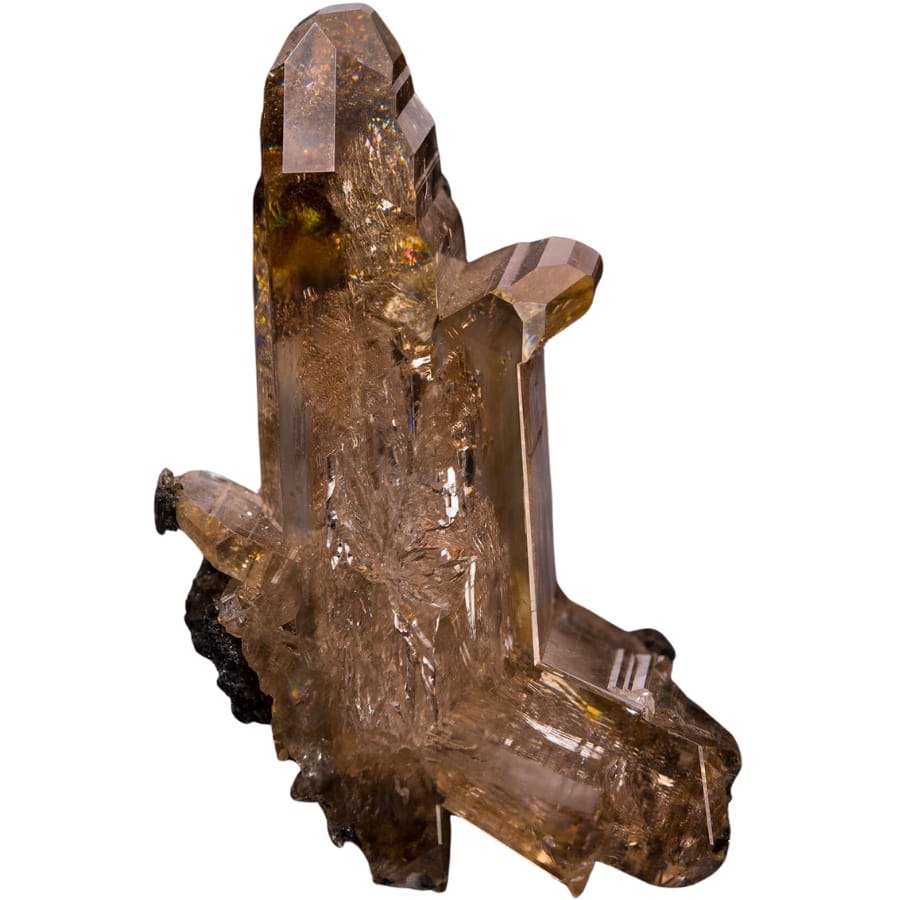
Known for its sparkly, diamond-like appearance, cerussite can be clear, white, or even have a hint of gray or blue. This gem is actually a form of lead carbonate.
It forms usually in areas where lead ores are found. When lead combines with carbon and oxygen, often in the upper parts of lead ore deposits where the lead gets exposed to air and reacts with it, cerussite is created.
This amazing gem has a high level of sparkle, technically called “dispersion.” It’s a measure of how much a gem can split light into different colors, like a tiny rainbow.
Cerussite has a dispersion higher than diamond, which means it’s super sparkly and catches the light in a dazzling way. This makes it really popular for collectors and gem enthusiasts.
This gem is also valuable to scientists and geologists. By studying cerussite, they can learn about the levels of lead and oxygen in the area where it formed and how different minerals react with each other.
Where you can find cerussite in Utah
Our state has an abundant deposit of cerussite, and some of the best places to explore for it are:
- Bradshaw Mountains
- Wah Wah Mountains
- Bullion Canyon
Galena
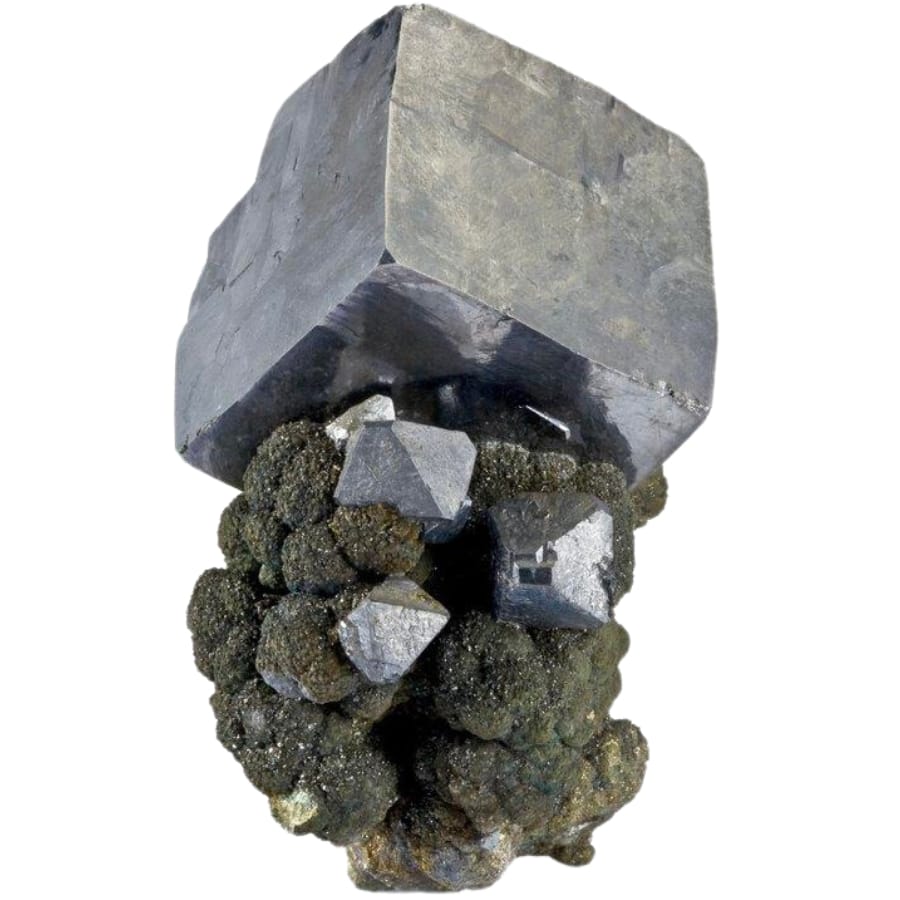
Galena is a mineral that looks like shiny, metallic cubes. It’s usually a silvery-gray color and is really heavy for its size. It’s the main source of lead, a metal we use in many things.
This mineral forms deep underground in places where hot, mineral-rich fluids move through rocks. When they cool down, the elements start to stick together and form crystals. In galena’s case, sulfur and lead from these fluids combine to create it.
For thousands of years, we have valued galena mostly because it’s the main way we get lead. In ancient times, lead from galena was used to make pipes and paint, although now we know that lead can be harmful if we’re not careful with it.
Today, we use lead in batteries, like the kind in cars, and in protective shields for X-ray machines in hospitals because it’s really good at blocking radiation.
Another neat thing about galena is that it sometimes has silver in it, which makes it even more valuable.
Where you can find galena in Utah
If you’re eyeing for galena, you can explore the following specific sites:
- Raft River Mountains
- Logan Canyon
- Bear River Range
Brochantite
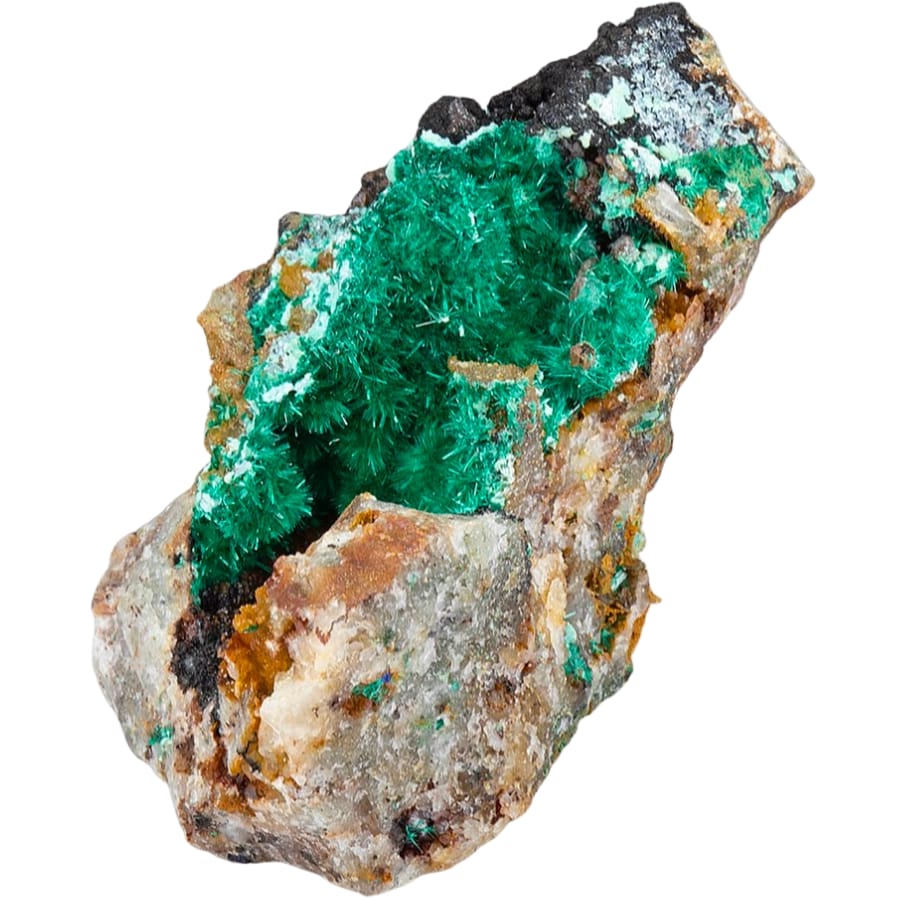
Known for its beautiful, deep green color, brochantite often forms in places where copper is found. That is because it’s made of copper, sulfur, and oxygen.
It usually forms in dry, arid regions where copper minerals react with the oxygen in the air and the sulfur in the water.
Because of this, brochantite is often found in the upper zones of copper deposits. These are areas where copper is close to the surface and gets exposed to air and water. This mineral can form in various shapes, from tiny needle-like crystals to larger, more complex structures.
Brochantite’s vivid green color makes it a favorite among mineral collectors and enthusiasts. It’s also important for scientists and geologists because it tells them a lot about the environment where it formed, like the amount of water or oxygen there.
Additionally, because brochantite contains copper, it can be a useful indicator of larger copper deposits nearby.
Where you can find brochantite in Utah
The sole site where you can find brochantite in Utah is at the Yellow Canary Uranium Deposit, which is on the west side of the Red Creek Canyon.
Orpiment

Orpiment catches your eye with its bright yellow to orange color. It’s made up of arsenic and sulfur, which might sound scary because arsenic can be dangerous, but in orpiment, it’s locked up in it.
This mineral is usually found in volcanic areas or hot springs. That’s because it forms from the cooling of volcanic gases or from waters heated by volcanic activity deep underground. When these gases or waters come up to the surface and cool down, they leave behind orpiment.
We have been interested in orpiment for a long time, but not just because it’s pretty. In ancient times, it was ground up and used as a paint or dye. Its bright yellow color was really popular for decorating things.
Nowadays, we know to be careful with it because of the arsenic, but scientists and collectors still find it fascinating.
Orpiment is also valuable to scientists because it can tell them about the conditions deep underground where it formed. By studying it, they can learn about the temperature and pressure deep in the Earth, and even about the kinds of gases that were present in volcanic areas long ago.
Where you can find orpiment in Utah
To find orpiment, you can search through the following areas:
- Mines in San Rafael district
- Mines in Mercur
- Vipont Mine
The Best Locations For Crystal Mining We’ve Found
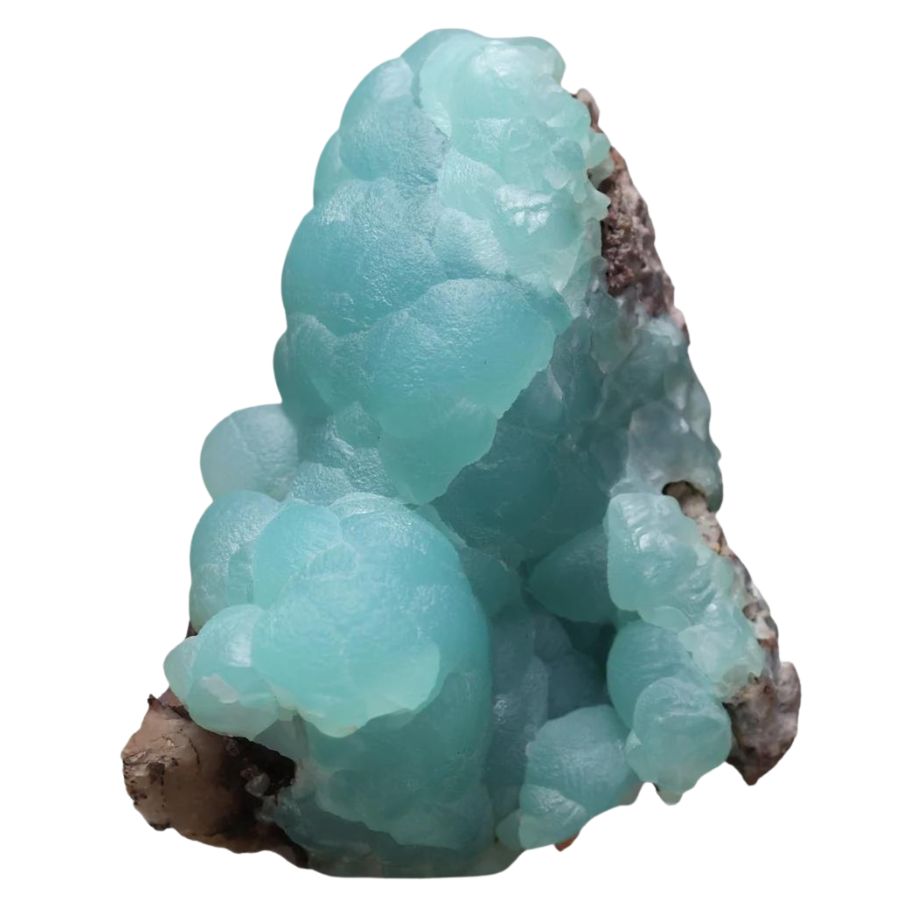
Here are our top five recommendations if you want to look for crystals in the state:
Always Confirm Access and Collection Rules!
Before heading out to any of the locations on our list you need to confirm access requirements and collection rules for both public and private locations directly with the location. We haven’t personally verified every location and the access requirements and collection rules often change without notice.
Many of the locations we mention will not allow collecting but are still great places for those who love to find beautiful rocks and minerals in the wild without keeping them. We also can’t guarantee you will find anything in these locations since they are constantly changing.
Always get updated information directly from the source ahead of time to ensure responsible rockhounding. If you want even more current options it’s always a good idea to contact local rock and mineral clubs and groups
Topaz Mountain

Aptly named after the stunning Topaz crystals that can be found here, which are naturally light yellow in color but turn clear when exposed to sunlight, Topaz Mountain is on top of our recommendations list.
It’s also a great place to find high-quality gems in Utah in case you’re in search of them, too.
This area was once a bustling mining town during the gold rush, and many prospectors tried their luck searching for precious metals and gemstones. However, it wasn’t until the early 1900s that Topaz was discovered here, and it quickly became a sought-after mineral.
Topaz Mountain, located in the Thomas Range, is composed of rhyolite, a type of volcanic rock that is rich in mineral deposits. The crystals here are often found in cavities and fractures within the rock.
Where we found crystals on Topaz Mountain
Although Topaz Mountain is naturally rich in crystals in all its nooks and crannies, we still recommend exploring the natural basin at the south base of the mountain first.
The crystals you can find here are Calcite, Carnelian, Chalcedony, Fluorite, Garnet, Hematite, Quartz, and, of course, Topaz.
If you want REAL results finding incredible rocks and minerals you need one of these 👇👇👇
Finding the coolest rocks in isn’t luck, it's knowing what to look for. Thousands of your fellow rock hunters are already carrying Rock Chasing field guides. Maybe it's time you joined the community.
Lightweight, mud-proof, and packed with clear photos, it’s become the go-to tool for anyone interested discovering what’s hidden under our red dirt and what they've already found.
Join them, and make your next rockhounding trip actually pay off.
What makes it different:
- 📍 Find and identify 140 incredible crystals, rocks, gemstones, minerals, and geodes across the USA
- 🚙 Field-tested across America's rivers, ranchlands, mountains, and roadcuts
- 📘 Heavy duty laminated pages resist dust, sweat, and water
- 🧠 Zero fluff — just clear visuals and straight-to-the-point info
- ⭐ Rated 4.8★ by real collectors who actually use it in the field
Dugway Geode Beds
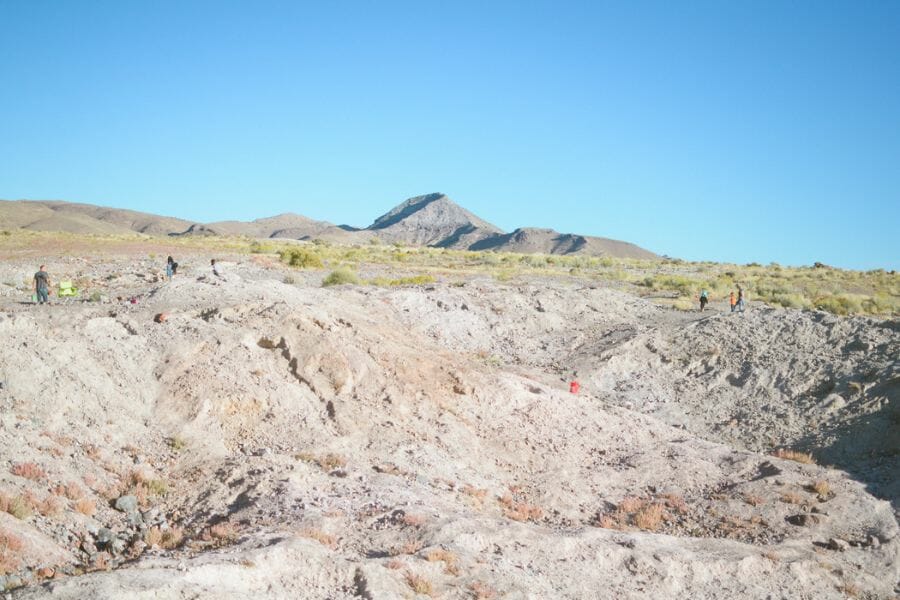
The Dugway Geode Beds are located in western Utah, near the town of Dugway.
This area has a rich history as it was once home to a thriving mining community. However, it wasn’t until the mid-20th century that geodes were discovered here, and they quickly became a popular item among collectors and enthusiasts.
To find crystals here, you’ll need to do some hiking and exploration. Keep your eyes peeled when you visit because crystals here are typically scattered across the landscape and found in clusters.
Where we found crystals at the Dugway Geode Beds
The Dugway Geode Beds are rich in stunning, highly sought-after Amethyst and Quartz crystals that you can find practically anywhere in the area.
Once you find them, you might start wondering how much they’re worth. Read up on crystal prices here.
Great Salt Lake
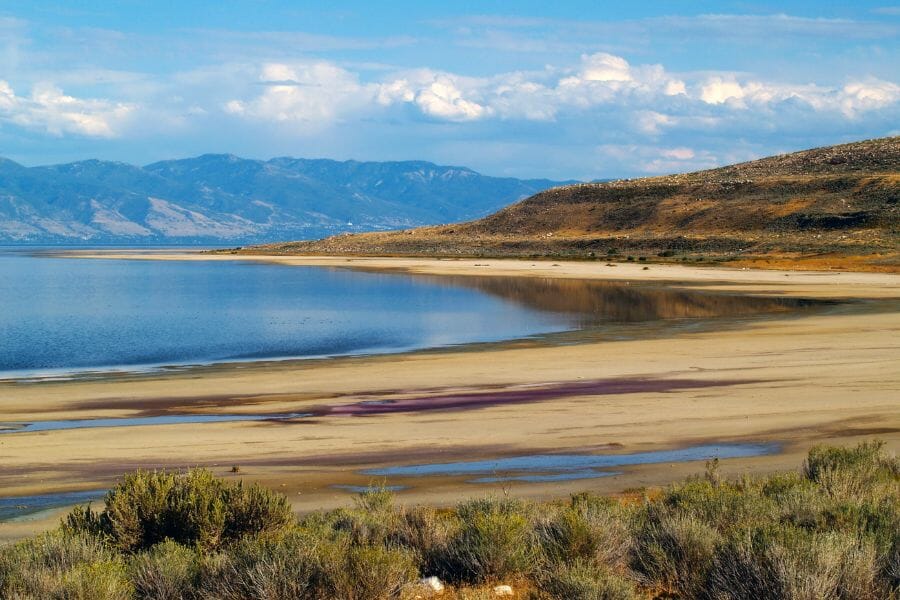
The Great Salt Lake is the largest saltwater lake in the Western Hemisphere, covering an area of over 1,700 square miles. It was formed over 10,000 years ago during the last ice age when melting glaciers filled the basin with water.
It’s been an important source of salt and other minerals for centuries, and even today, the lake is an important economic resource for the state.
The lake is located in the northern part of Utah and is surrounded by mountains and desert. The water in the lake is incredibly salty, with a salinity level that is about eight times saltier than the ocean.
Because of this, the lake has a unique ecosystem and is home to a variety of unique plant and animal species.
But what really makes the Great Salt Lake a great place for crystal hunting is the geology of the area. The lake sits on top of a vast network of underground streams and springs that bring a variety of minerals to the surface.
As the water in the lake evaporates, these minerals are left behind, creating a rich deposit of crystals and other minerals. So, if you’re looking for crystals, the Great Salt Lake is definitely worth checking out!
Where we found crystals at the Great Salt Lake
You can explore along the shores of the Great Salt Lake and you might be lucky to uncover Aragonite and Halite crystals.
San Rafael Swell
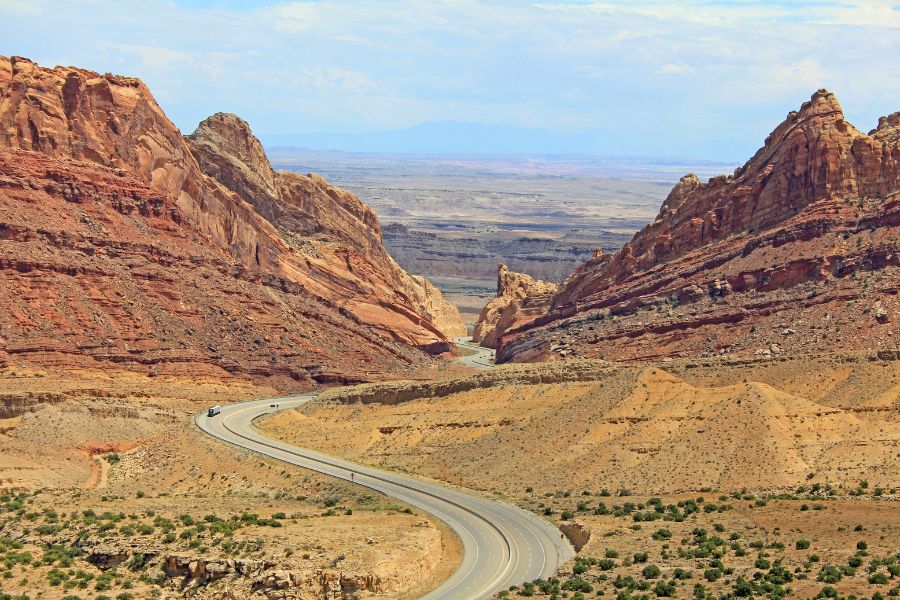
The San Rafael Swell is a large geological feature that was formed over millions of years of erosion and tectonic activity. It was named after the San Rafael River, which flows through the area, and was first explored by Spanish missionaries in the 1700s.
The swell is characterized by its unique sandstone formations, deep canyons, and rugged terrain. It’s a popular destination for hikers, backpackers, and rock climbers, but it’s also a great place to find crystals.
The area is rich in a variety of minerals, and some of the best places to look for crystals here are in the exposed rock faces and along the banks of the many creeks and rivers that run through the swell.
Where we found crystals at the San Rafael Swell
If you’re here, we recommend exploring the regional surfaces, draws, and washes of the San Rafael Swell. Some of the crystals you can find here are beautiful samples of Agate, Chalcedony, Jasper, and Selenite.
Black Rock

Black Rock was originally settled by the Paiute Indians, who used the nearby springs for drinking water and irrigating their crops.
Later on, miners came to the area in search of precious metals, but it was eventually abandoned due to the harsh desert environment.
Black Rock is located in the western part of the state, near the Nevada border. It’s situated in a desert landscape, with sparse vegetation and rugged terrain.
The rocks themselves are volcanic in origin and are composed of a variety of different minerals.
These volcanic rocks have been known to contain a wide variety of crystals. The harsh desert environment has also helped to preserve many of these crystals, making them easier to find.
When you visit Black Rock, be sure to bring plenty of water, sunscreen, and other essential supplies. The area can be quite hot and dry, especially during the summer months, so it’s important to take proper precautions to stay safe and comfortable.
Where we found crystals in Black Rock
You can find Snowflake Obsidian that appears as volcanic glass crystals with white mineral inclusions looking like snowflakes, if you explore the area draws, washes, and surfaces of Black Rock.
Our Other Favorite Places For Crystal Hunting
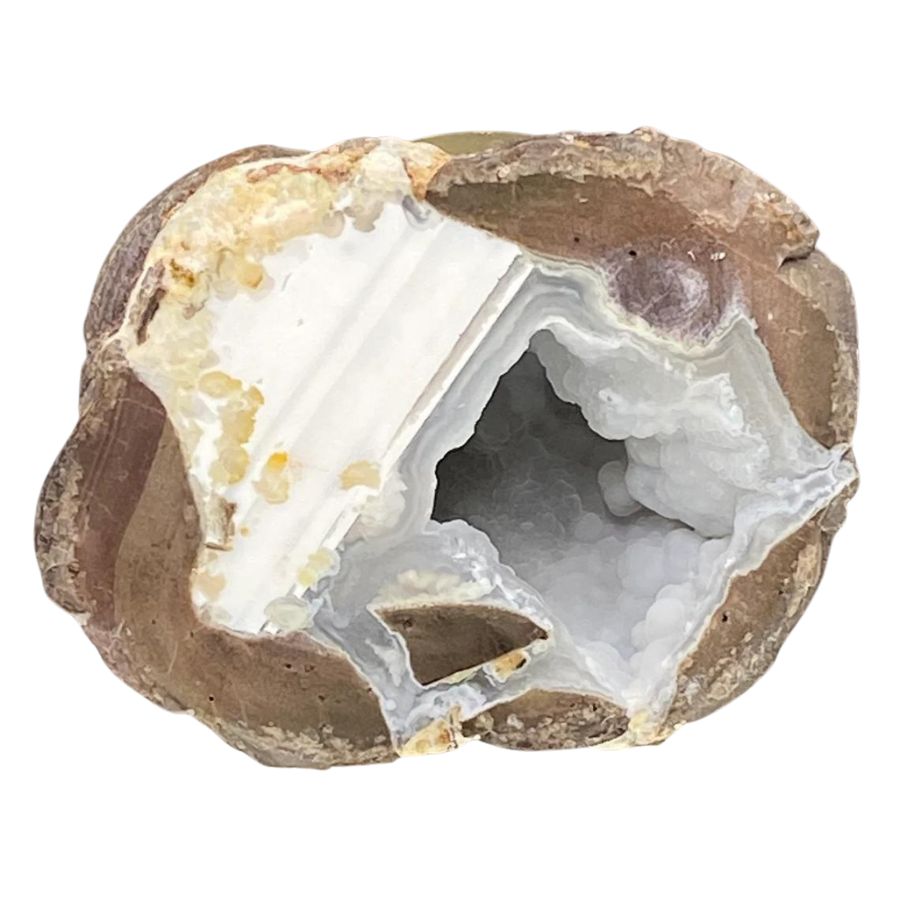
Since Utah is naturally rich in crystals, it should come as no surprise that there are plenty of other interesting sites that you can explore here. In fact, many of these sites also offer some of the best Utah geodes that you can find.
Where you can find crystals for free
Without costing a cent, these places have proven to be interesting sites to find crystals in the state.
| County | Location |
| Beaver | Southwest slope of Frisco Peak |
| Emery | Along the shores of the Buckorn Reservoir |
| Garfield | Upstream north on both Muley Creek and Bullfrog Creek |
| Grand | Gravel bars of the Colorado River |
| Iron | All regional draws, washes, breaks, etc. outside monument boundary at Cedar Breaks National Monument |
| Kane | Along both sides of the East Fork Virgin Creek to Alton Road |
| Millard | Northeast of the railroad station at Clear Lake |
| Piute | In the Tushar Mountains |
| San Juan | In Oljeto Wash all the way to the San Juan River |
| Summit | South-southwest of the summit of Hayden Peak |
| Utah | Area draws, washes, surfaces of Fairfield |
| Washington | In Beaver Dam Wash |
| Wayne | Regional draws, washes, breaks, and surfaces of Torrey |
It can be very easy to confuse some of the more common crystals that are found here, so we came up with a few guides to telling specific crystals apart:
Other great places to dig for crystals
If you’re open to paying a fee to search for crystals, here are your best options. Keep in mind that the fees may change depending on the season, so make sure to contact them first before heading out.
| County | Location |
| Beaver | In the Mineral Mountains area mines |
| Box Elder | At the Copper Mountain Mine |
| Davis | Kaysville area mines |
| Juab | At the Honey Onyx Mine |
| Salt Lake | Area mines of Salt Lake City, in Big Cottonwood Canyon, Copperton, Brighton, Bingham, and Alta |
| San Juan | Area mines of La Sal |
| Sevier | At the Ball Mine |
| Summit | Many great mines and dumps at Park City |
| Tooele | Area mines of Clifton, Mercur, Ophir, Rush Valley, and Willow Springs |
| Uintah | At the Dyer Mine |
| Weber | Ogden area mines |
My tips for finding crystals
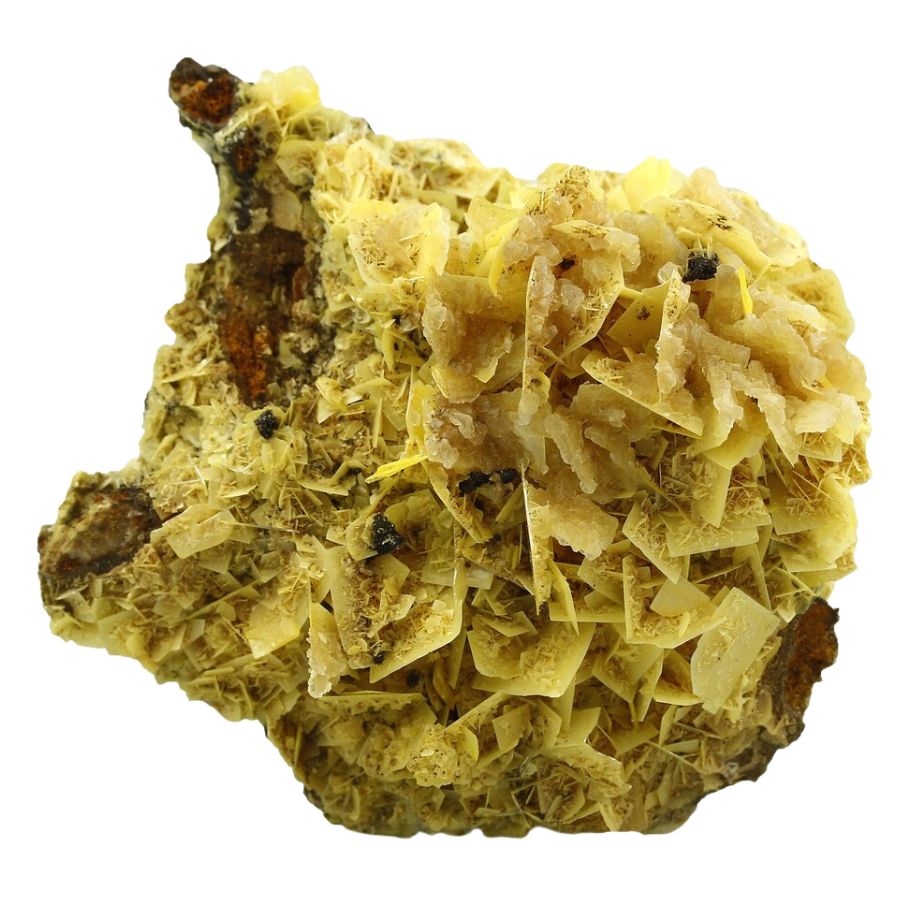
Many of the interesting sites that we shared above cover wide areas, so to help you narrow down and focus your search on possibly the most crystal-productive spots here, we’re recommending specific locations for you to explore first.
Streams and Creeks
Streams and creeks are natural pathways that allow minerals to flow and settle over time. As water passes over rocks and minerals, it picks up small crystals and moves them downstream. As a result, you can often find a variety of crystals along their banks.
When searching for crystals, keep an eye out for signs of geological activity. Look for areas where the flow of the water has carved out exposed rocks, as these areas may contain pockets of crystals.
Pay attention to the color and texture of the rocks and minerals around you, as this can give you clues about what types of crystals may be present here.
Rivers and Riverbanks
Searching for crystals in rivers and along river banks is another excellent way to find some beautiful specimens. Rivers are constantly flowing, which means they are always cutting through the land, exposing new layers of rock and mineral deposits.
This constant movement of water can also carry crystals downstream, where they may become lodged in the river bed or along the banks.
What’s more, the unique geology of river banks can create pockets of crystals and other minerals that are ripe for the picking.
Mines and Mine Dumps
Mines are often great places to find crystals because they are where minerals are extracted from the earth. As miners dig through the layers of rock and soil, they often uncover veins of crystals.
When miners discard unwanted material, it may end up in mine dumps, where crystals and other minerals may still be present.
There’s a high potential for finding rare and unique specimens in mines and mine dumps. Many of these places are known for producing specific types of crystals or gemstones, so doing some research ahead of time can help you target your search.
The Mining Laws And Regulations You Should Know
Mining for crystals comes with the responsibility of adhering to the local laws of the state pertaining to this activity, especially those mandated by the Utah Bureau of Land Management.
These laws include securing any necessary permit or permission before exploring any land for crystals.
Also, be mindful of any regulations imposed to protect the environment and biodiversity of an area. By abiding by these laws and guidelines, you are helping ensure that mining for crystals remains legal in Utah for years to come.
The Best Crystal Shops In The Area

If you don’t have much time or energy to go through our recommended sites to find crystals and prefer a relaxed way of taking them home, your best bet is to visit the local crystal shops.
Fortunately, Utah has some of the best stores with great crystal selections, such as the following:
- Healing Mountain Crystals – 363 S 500 E #210, Salt Lake City, UT 84102
- Meadow’s Crystal – 390 W Main St, Lehi, UT 84043
- Lotus – 12896 S Pony Express Rd #200, Draper, UT 84020
- Treasures N Creations – 3419 S State St, Salt Lake City, UT 84115
- Utah Crystal Sanctuary – 9139 2700 S, Magna, UT 84044
- Crystals By Rob – 1261 Clubhouse Dr Apt 3413, Taylorsville, UT 84123
- Wandering Stones – 439 S Pleasant Grove Blvd, Pleasant Grove, UT 84062
- Jim’s Gems & Jewelry – 362 E 1090 N, Orem, UT 84057
- Crystal Charm Healing Shop – 165 S 700 W, Hurricane, UT 84737
- The Crystal Fairy – 1100 W 7800 S #15, West Jordan, UT 84088
Additional places to find crystals in nearby states
If you’ve already tried all of our recommendations above or are planning a trip out of the state, you should check out our guides for neighboring states:
- Crystals in Idaho
- Crystals in Wyoming
- Crystals in Colorado
- Crystals in New Mexico
- Crystals in Arizona
- Crystals in Nevada
If you have any recommendations we haven’t covered, please leave them in the comments below!

